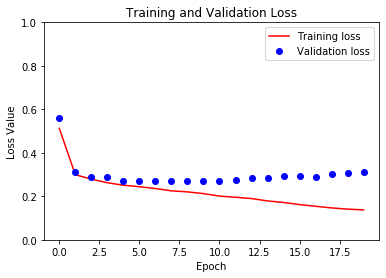1
tensorflow 实现像素级图像分割算法
发布于: 2021 年 03 月 31 日

目前你已经了解在图像分类中,神经网络的任务是给每张输入图像分配一个标签或者类别。但是,有时你想知道一个物体在一张图像中的位置、这个物体的形状、以及哪个像素属于哪个物体等等。这种情况下你会希望分割图像,也就是给图像中的每个像素各分配一个标签。因此,图像分割的任务是训练一个神经网络来输出该图像对每一个像素的掩码。这对从更底层,即像素层级,来理解图像很有帮助。图像分割在例如医疗图像、自动驾驶车辆以及卫星图像等领域有很多应用。
本教程将使用的数据集是 Oxford-IIIT Pet 数据集,由 Parkhi et al. 创建。该数据集由图像、图像所对应的标签、以及对像素逐一标记的掩码组成。掩码其实就是给每个像素的标签。每个像素分别属于以下三个类别中的一个:
类别 1:像素是宠物的一部分。 类别 2:像素是宠物的轮廓。 类别 3:以上都不是/外围像素。
代码下载:
https://github.com/wennaz/Deep_Learning/
#!pip install -q git+https://github.com/tensorflow/examples.git#!pip install -q -U tfds-nightly
import tensorflow as tffrom tensorflow_examples.models.pix2pix import pix2piximport urllib3
import tensorflow_datasets as tfds
from IPython.display import clear_output
import matplotlib.pyplot as plt
urllib3.disable_warnings(urllib3.exceptions.InsecureRequestWarning)
for i in [tf,tfds]: print(i.__name__,": ",i.__version__,sep="")
#这个数据集已经集成在 Tensorflow datasets 中,只需下载即可。图像分割掩码在版本 3.0.0 中才被加入,因此我们特别选用这个版本。dataset, info = tfds.load('oxford_iiit_pet:3.*.*', with_info=True)
#下图像标准化到 [0,1]。为了方便起见,我们将分割掩码都减 1,得到了以下的标签:{0, 1, 2}。def normalize(input_image, input_mask): input_image = tf.cast(input_image, tf.float32) / 255.0 input_mask -= 1 return input_image, input_mask
#下面的代码进行了一个简单的图像翻转扩充@tf.functiondef load_image_train(datapoint): input_image = tf.image.resize(datapoint['image'], (128, 128)) input_mask = tf.image.resize(datapoint['segmentation_mask'], (128, 128))
if tf.random.uniform(()) > 0.5: input_image = tf.image.flip_left_right(input_image) input_mask = tf.image.flip_left_right(input_mask)
input_image, input_mask = normalize(input_image, input_mask)
return input_image, input_mask
def load_image_test(datapoint): input_image = tf.image.resize(datapoint['image'], (128, 128)) input_mask = tf.image.resize(datapoint['segmentation_mask'], (128, 128))
input_image, input_mask = normalize(input_image, input_mask)
return input_image, input_mask
#测试集和训练集划分TRAIN_LENGTH = info.splits['train'].num_examplesBATCH_SIZE = 64BUFFER_SIZE = 1000STEPS_PER_EPOCH = TRAIN_LENGTH // BATCH_SIZE
train = dataset['train'].map(load_image_train, num_parallel_calls=tf.data.experimental.AUTOTUNE)test = dataset['test'].map(load_image_test)train_dataset = train.cache().shuffle(BUFFER_SIZE).batch(BATCH_SIZE).repeat()train_dataset = train_dataset.prefetch(buffer_size=tf.data.experimental.AUTOTUNE)test_dataset = test.batch(BATCH_SIZE)
#数据集中的一例图像以及它所对应的掩码def display(display_list): plt.figure(figsize=(15, 15))
title = ['Input Image', 'True Mask', 'Predicted Mask']
for i in range(len(display_list)): plt.subplot(1, len(display_list), i+1) plt.title(title[i]) plt.imshow(tf.keras.preprocessing.image.array_to_img(display_list[i])) plt.axis('off') plt.show()
for image, mask in train.take(1): sample_image, sample_mask = image, maskdisplay([sample_image, sample_mask])
# 这里用到的模型是一个改版的 U-Net。U-Net 由一个编码器(下采样器(downsampler))和一个解码器(上采样器(upsampler))组成。#为了学习到鲁棒的特征,同时减少可训练参数的数量,这里可以使用一个预训练模型作为编码器。#因此,这项任务中的编码器将使用一个预训练的 MobileNetV2 模型,它的中间输出值将被使用。#解码器将使用在 TensorFlow Examples 中的 Pix2pix tutorial 里实施过的升频取样模块。# 输出信道数量为 3 是因为每个像素有三种可能的标签。把这想象成一个多类别分类,每个像素都将被分到三个类别当中。OUTPUT_CHANNELS = 3
#编码器是一个预训练的 MobileNetV2 模型,它在 tf.keras.applications 中已被准备好并可以直接使用。#编码器中包含模型中间层的一些特定输出。注意编码器在模型的训练过程中是不会被训练的。base_model = tf.keras.applications.MobileNetV2(input_shape=[128, 128, 3], include_top=False)
# 使用这些层的激活设置layer_names = [ 'block_1_expand_relu', # 64x64 'block_3_expand_relu', # 32x32 'block_6_expand_relu', # 16x16 'block_13_expand_relu', # 8x8 'block_16_project', # 4x4]layers = [base_model.get_layer(name).output for name in layer_names]
# 创建特征提取模型down_stack = tf.keras.Model(inputs=base_model.input, outputs=layers)down_stack.trainable = False#解码器/升频取样器是简单的一系列升频取样模块
up_stack = [ pix2pix.upsample(512, 3), # 4x4 -> 8x8 pix2pix.upsample(256, 3), # 8x8 -> 16x16 pix2pix.upsample(128, 3), # 16x16 -> 32x32 pix2pix.upsample(64, 3), # 32x32 -> 64x64]
def unet_model(output_channels): inputs = tf.keras.layers.Input(shape=[128, 128, 3]) x = inputs
# 在模型中降频取样 skips = down_stack(x) x = skips[-1] skips = reversed(skips[:-1])
# 升频取样然后建立跳跃连接 for up, skip in zip(up_stack, skips): x = up(x) concat = tf.keras.layers.Concatenate() x = concat([x, skip])
# 这是模型的最后一层 last = tf.keras.layers.Conv2DTranspose( output_channels, 3, strides=2, padding='same') #64x64 -> 128x128
x = last(x)
return tf.keras.Model(inputs=inputs, outputs=x)
#训练模型model = unet_model(OUTPUT_CHANNELS)model.compile(optimizer='adam', loss=tf.keras.losses.SparseCategoricalCrossentropy(from_logits=True), metrics=['accuracy'])#多分类损失函数tf.keras.utils.plot_model(model, show_shapes=True)
#我们试着运行一下模型,看看它在训练之前给出的预测值。def create_mask(pred_mask): pred_mask = tf.argmax(pred_mask, axis=-1) pred_mask = pred_mask[..., tf.newaxis] return pred_mask[0]
def show_predictions(dataset=None, num=1): if dataset: for image, mask in dataset.take(num): pred_mask = model.predict(image) display([image[0], mask[0], create_mask(pred_mask)]) else: display([sample_image, sample_mask, create_mask(model.predict(sample_image[tf.newaxis, ...]))])
show_predictions()
#我们来观察模型是怎样随着训练而改善的。为达成这一目的,下面将定义一个 callback 函数。class DisplayCallback(tf.keras.callbacks.Callback): def on_epoch_end(self, epoch, logs=None): clear_output(wait=True) show_predictions() print ('\nSample Prediction after epoch {}\n'.format(epoch+1))
EPOCHS = 20VAL_SUBSPLITS = 5VALIDATION_STEPS = info.splits['test'].num_examples//BATCH_SIZE//VAL_SUBSPLITS
# Fitmodel_history = model.fit(train_dataset, epochs=EPOCHS, steps_per_epoch=STEPS_PER_EPOCH, validation_steps=VALIDATION_STEPS, validation_data=test_dataset, callbacks=[DisplayCallback()])
loss = model_history.history['loss']val_loss = model_history.history['val_loss']
epochs = range(EPOCHS)
plt.figure()plt.plot(epochs, loss, 'r', label='Training loss')plt.plot(epochs, val_loss, 'bo', label='Validation loss')plt.title('Training and Validation Loss')plt.xlabel('Epoch')plt.ylabel('Loss Value')plt.ylim([0, 1])plt.legend()plt.show()
#我们来做几个预测。为了节省时间,这里只使用很少的周期(epoch)数,但是你可以设置更多的数量以获得更准确的结果。show_predictions(test_dataset, 3)复制代码
output1:

Sample Prediction after epoch 20
57/57 [==============================] - 224s 4s/step - loss: 0.1375 - accuracy: 0.9374 - val_loss: 0.3113 - val_accuracy: 0.8930
复制代码


predict1.png

predict2.png

predict3.png
划线
评论
复制
发布于: 2021 年 03 月 31 日阅读数: 8
AI_robot
关注
还未添加个人签名 2021.03.31 加入
Deep Learning从业者












评论